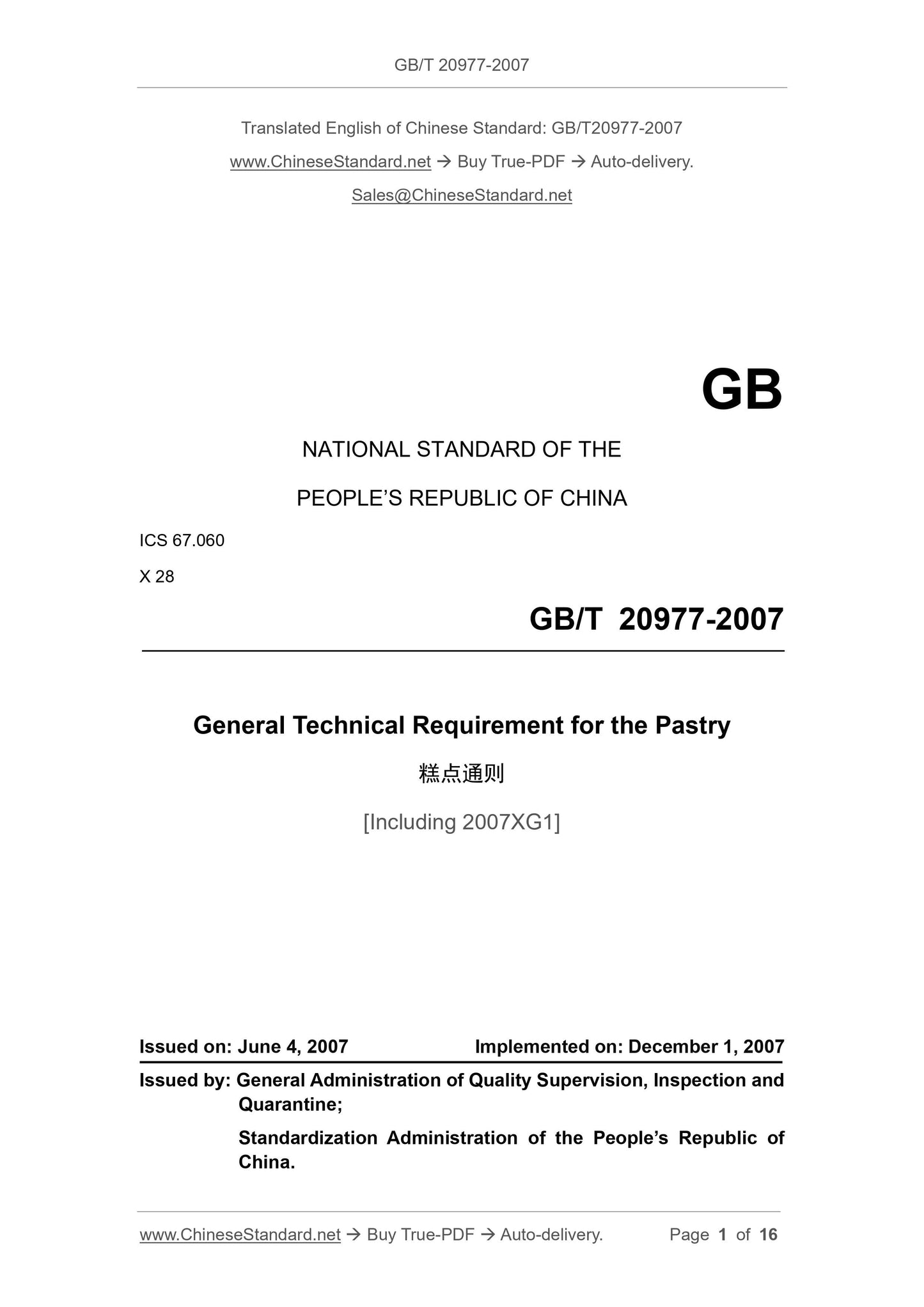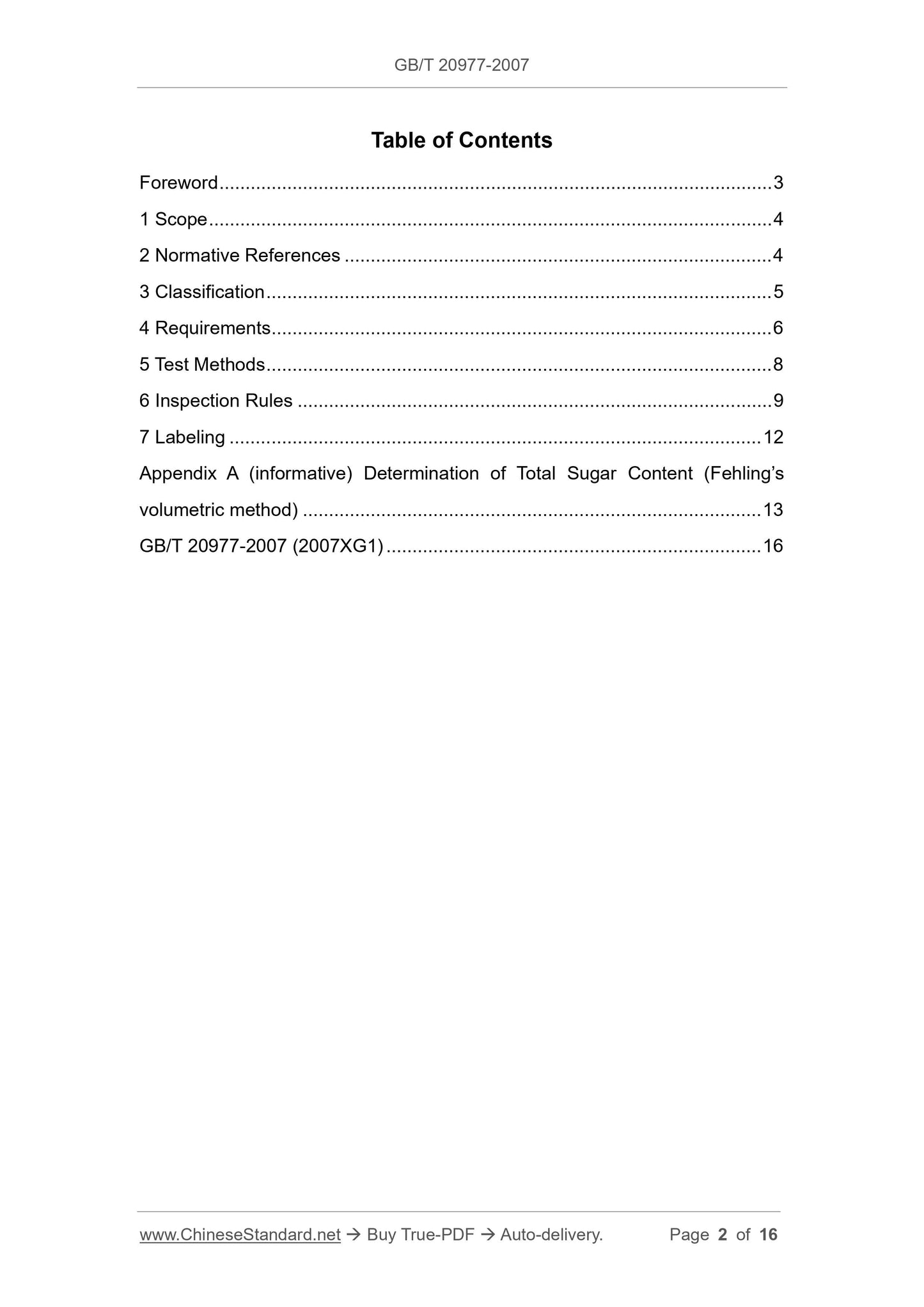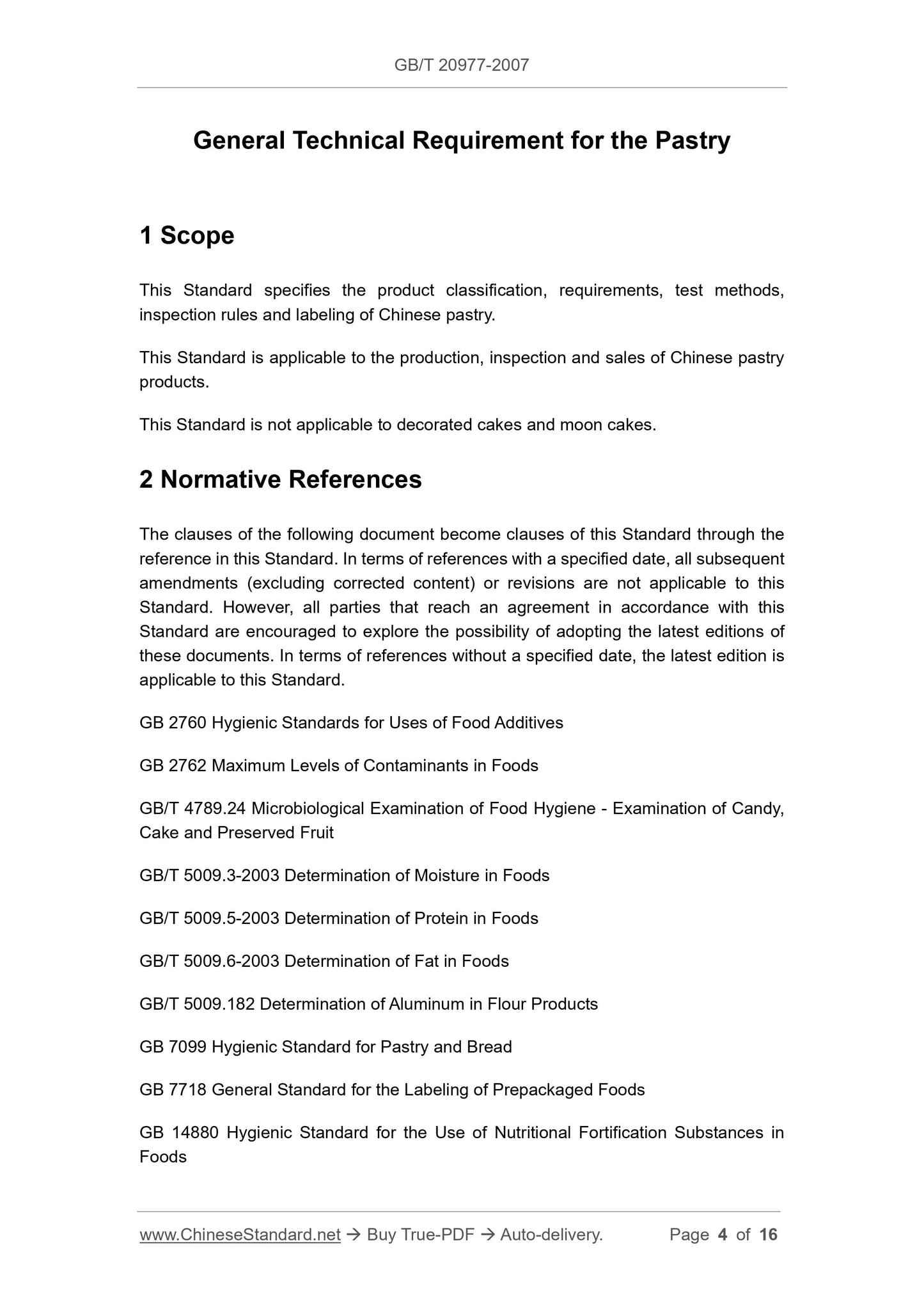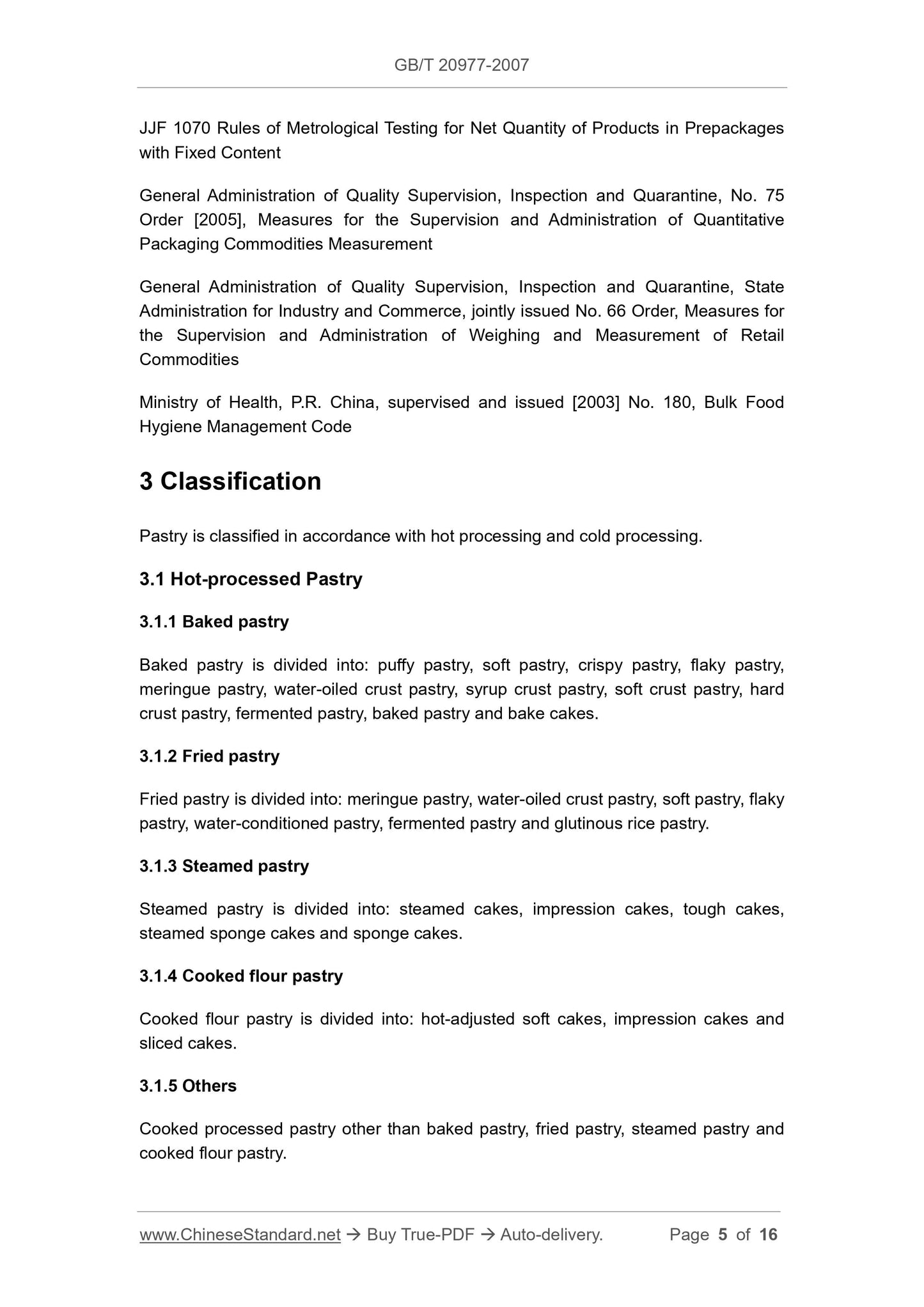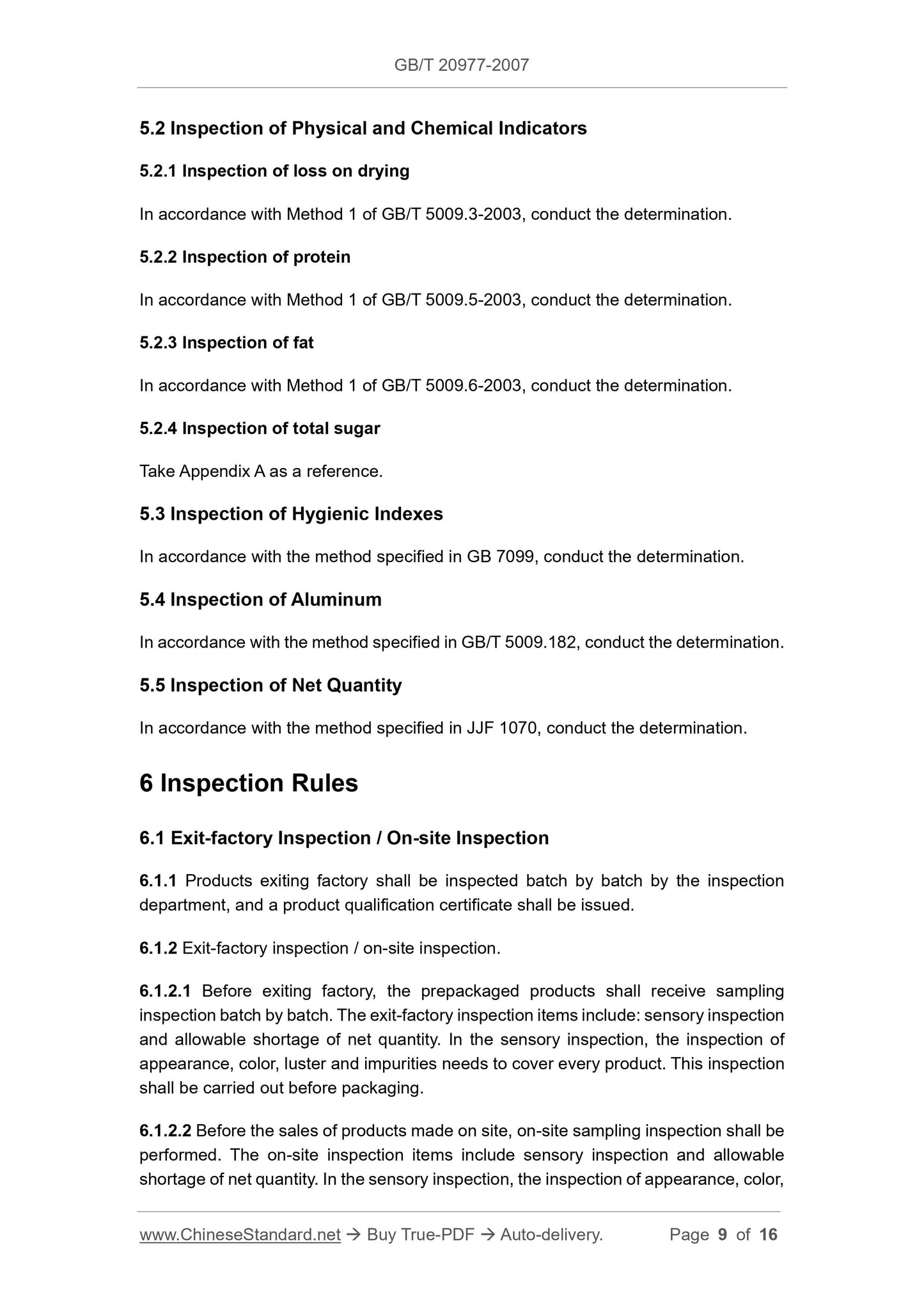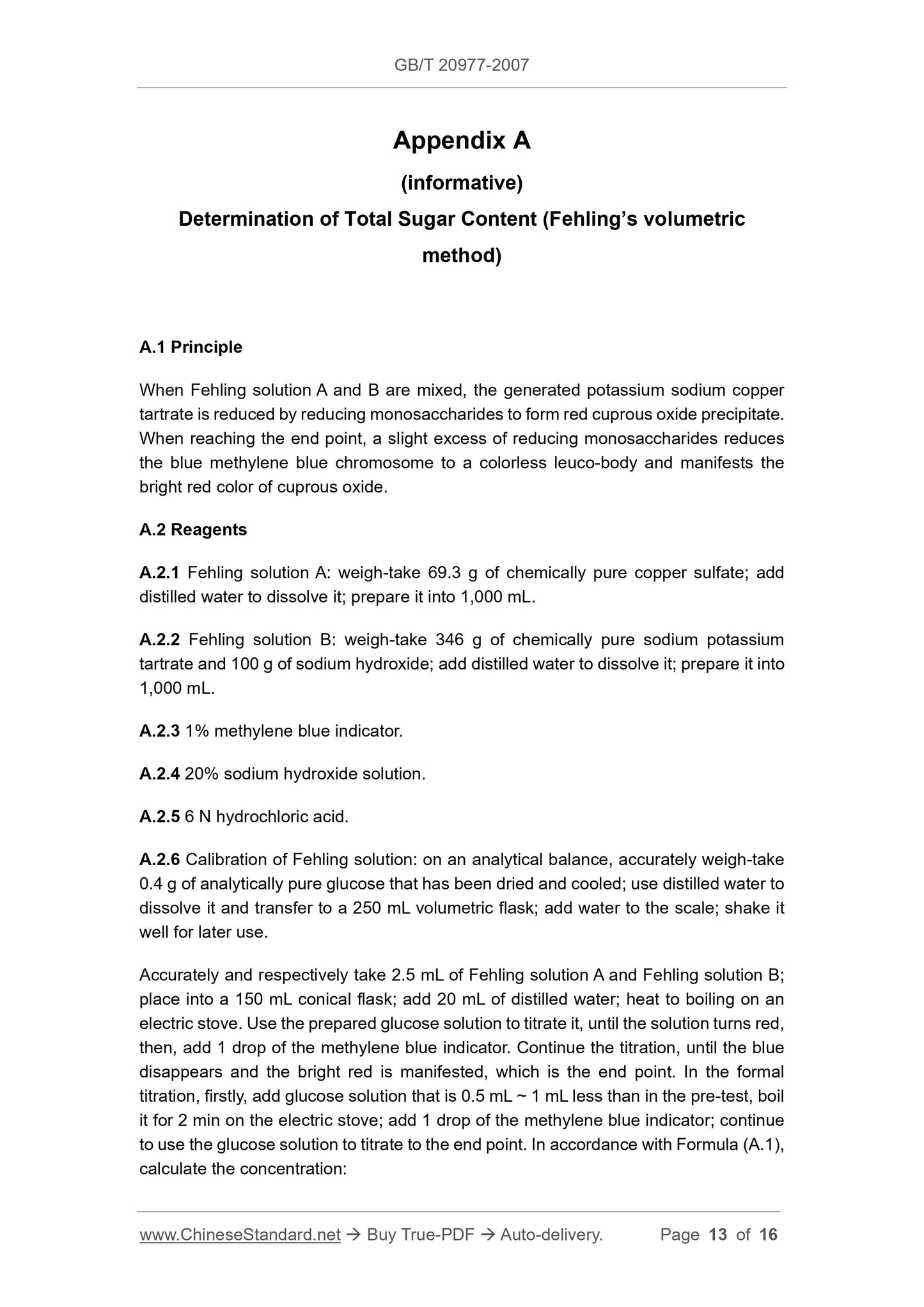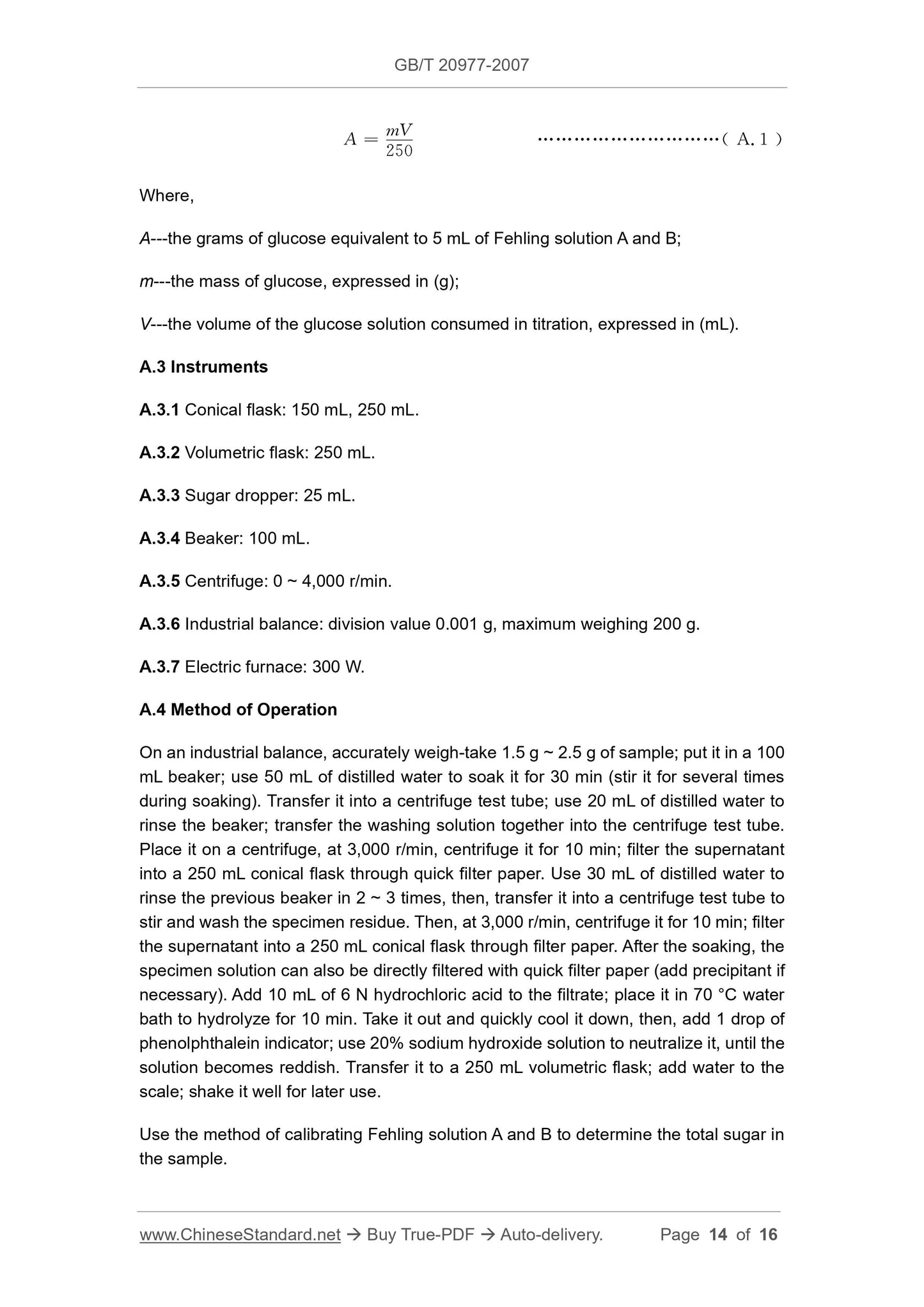1
/
of
7
www.ChineseStandard.us -- Field Test Asia Pte. Ltd.
GB/T 20977-2007 English PDF (GB/T20977-2007)
GB/T 20977-2007 English PDF (GB/T20977-2007)
Regular price
$130.00
Regular price
Sale price
$130.00
Unit price
/
per
Shipping calculated at checkout.
Couldn't load pickup availability
GB/T 20977-2007: [Including 2017XG1] General technical requirement for the pastry
Delivery: 9 seconds. Download (and Email) true-PDF + Invoice.Get Quotation: Click GB/T 20977-2007 (Self-service in 1-minute)
Newer / historical versions: GB/T 20977-2007
Preview True-PDF
Scope
This Standard specifies the product classification, requirements, test methods,inspection rules and labeling of Chinese pastry.
This Standard is applicable to the production, inspection and sales of Chinese pastry
products.
This Standard is not applicable to decorated cakes and moon cakes.
Basic Data
| Standard ID | GB/T 20977-2007 (GB/T20977-2007) |
| Description (Translated English) | [Including 2017XG1] General technical requirement for the pastry |
| Sector / Industry | National Standard (Recommended) |
| Classification of Chinese Standard | X28 |
| Classification of International Standard | 67.060 |
| Word Count Estimation | 11,190 |
| Date of Issue | 2007-06-04 |
| Date of Implementation | 2007-12-01 |
| Older Standard (superseded by this standard) | SB/T 10222-1994; SB/T 10223-1994; SB/T 10224-1994; SB/T 10225-1994; SB/T 10226-1994; SB/T 10227-1994; SB/T 10030-1992; SB/T 10031-1992; SB/T 10032-1992; SB/T 10033-1992 |
| Quoted Standard | GB 2760; GB 2762; GB/T 4789.24; GB/T 5009.3-2003; GB/T 5009.5-2003; GB/T 5009.6-2003; GB/T 5009.182; GB 7099; GB 7718; GB 14880; JJF 1070; country quality supervision, Inspection and Quarantine Order No. 75 [ 2005 ] prepackaged goods metrological supervision and management measures; General Administration of Quality supervision, Inspection and Quarantine, the State Administration for Industry and Commerce jointly issued Decree No. 66 of retail goods weighing supervision and management measures; People Ministry of Health Jian Fa [ 2003 ] No. 180 bulk food hygiene management practices |
| Regulation (derived from) | National Standard Announcement 2007 No.6 (Total No.106) (National-Standard-Commission) |
| Issuing agency(ies) | General Administration of Quality Supervision, Inspection and Quarantine of the People's Republic of China, Standardization Administration of the People's Republic of China |
| Summary | This standard specifies the classification of Chinese pastry products, requirements, test methods, requires testing and labeling rules. This standard applies to Chinese pastry products, inspection and sales. This standard does not apply to decorative cakes and moon cake. |
Share
